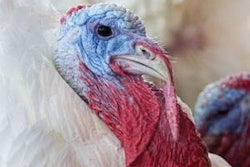
Michel Rieu, director of the economic district of the French Pig Production Institute (IFIP), is starting to smile again — just before summer, French pig prices increased enough to cover production costs.
The trend of farm restructuring will nevertheless go on. And some not-so-good news, reported from the French annual international livestock show (SPACE) held mid-September in Rennes: The announcement of a new price reduction.
Pig price weakness began in Germany at the beginning of September and spread all over Europe. As the last part of the year is classically slower than summer times due to French habits of summer “grilled meat,” Rieu, an economist, saw no real hope on the price front before the second half of 2010.
While it is difficult to forecast any price improvement in the short term, “We can hope for (increases) next year as the pig production is also slow in North America.”
Germany is market leader
In the recent years, Germany became a kind of “director-market” in the European Union, explains Rieu.
“A large market is emerging between Denmark, Netherlands, and northeast Germany, even Belgium, driven by German production with a kind of specialization: piglets in Denmark and Netherlands, finishing and slaughtering in Germany. The specialization improves the performance and the size of farms: in Northern Europe, 50% of the sows are on farms with 1,000 sows or more now.”
The strong concentration of German slaughtering has paved the way for two leaders: Tonnies (12 million pigs slaughtered in 2008 or 22% of the total) and Vion (10 million of its international 18 million). The third one, Westfleich is some steps behind (6.2 million pigs). The three of them slaughter more than half of the market.
The IFIP invited a German pork official, Dietmar Weiss of Agrarmarkt to present a picture of the evolution of Germany’s pork industry during SPACE. A top producer in the EU and one of the most dynamic (+16% in 2008), Germany has registered an impressive increase of pig production during the last 14 years to reach 26,176,000 pigs in 2008 (4,604,000 tons).
The second in EU is Spain (26,290 000 pigs or 3,532,000 tons) and France is third in production with 14,796,000 pigs or 2,327,000 tons).
Consumption may slow
Germans are the largest consumers of pig products in the EU at 54 kg/year compared with 41 kg/year in the EU overall. French are relatively low pork consumers as 34 kg/year). Even if its own importation increases, Germany is now more than self-sufficient (104%). So, as France (106%), it must export even if it is a less dedicated export profile than Denmark (757% of self sufficiency).
Experts forecast a slowdown in German consumption due to economic crisis, which reverberate in a price decline this fall. Some 7,000 pig farmers stopped producing this year. About 30% of German pig production is exported, with the balance obtained through the import of piglets (2.5 millions from Netherlands and 5-6 million from Denmark) and 5 million finished pigs.
Discounters shop in increasing in fresh meat (30% in 2004, growing to 37.5% in 2008) and even more for delicatessen use (40% in 2004, rising to 45% in 2008) due to increasing demand for self-service purchases.
All the other types of shops (hypermarket, supermarket, butchery) are decreasing. Germany is really the country of discounters: Italians bought no more than 11% of their delicatessen is such shops, with the French around 17.5%. The English are far behind with 5.3%, at the same level than Polish.
“For German people, quality is less important than price and that is the reason why it is difficult to compare the price consumers pay between French and German market,” said Weiss.
More comparable, the fresh meat is more expensive on the other markets than in Germany: In Italy the price for fresh meat is 10% higher than in Germany, 12% higher in Spain, and 20% higher in France.
For the expert, the pressure on price due to discounters is partly balanced by lower slaughter costs: No syndicate exists in food processing plants and salaries are really lower than in other EU countries, with workers coming from Eastern Europe countries. Some movement is in progress. A press scandal revealed that some workers had been paid less than half other German workers.
“The German companies are looking to the East, not only eastern European countries where they had already strong positions but to Asia where they actually organize collective actions. Before the end of the year, Chinese people will eat German pork meat and delicatessen,” said Weiss.
Difficulty finding exports
Rieu’s data shows that European consumption and exports are slowing down 7% to 8%.
“Production and consumption are decreasing in the eastern countries, so there is no opening there,” said Rieu. “Finding export insurance is more and more difficult. Exporting to countries outside the EU is kind of blocked. The size of companies is one of the keys: but in comparison of the European leaders of Danish Crown and Vion, who flirt with 20 million pigs, French leaders Cooperl-Arc Atlantique and Bigard-Socopa are around 6 millions pigs.”
“French pig producers technically (advanced) and food processing plants efficiency are good,” he continued. “One of the handicaps of French pig sector is logistic, however: Brittany is far from the heart of Europe. The second is a question of society. Our competitors are growing and we cannot do easily the same as it is very difficult to build or extend a pig farm.”

















